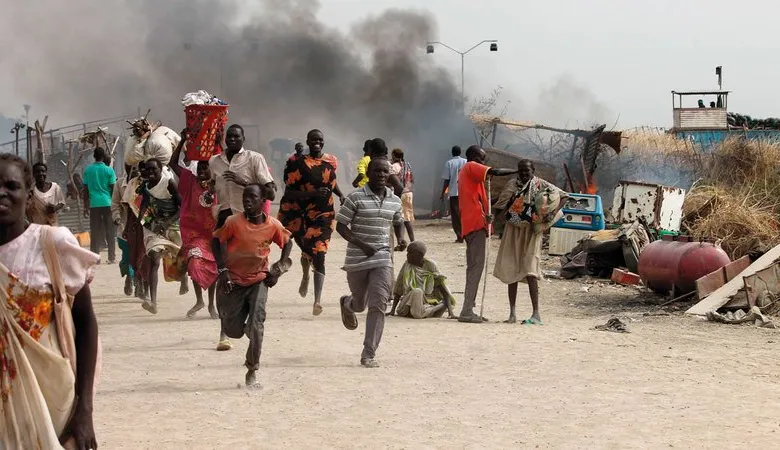Africa Grapples with Over 50 Active Conflicts, Fueling World’s Largest Displacement Crisis

According to a report by Al Jazeera’s “By the Numbers,” the African continent is currently the epicenter of global conflict, hosting 40% of the world’s wars and armed conflicts. The situation has resulted in the largest displacement crisis on the planet, with over 45 million people forced to flee their homes.
The International Committee of the Red Cross says there are more than 50 active armed conflicts across Africa, marking a staggering 45% increase since 2020. These conflicts are not isolated; they are fueled by a complex combination of economic, environmental, and political factors that create a devastating “cycle of conflicts.”
Five Key Drivers of the Conflicts
A combination of interconnected factors is responsible for fueling this widespread instability:
1. Vast Mineral Wealth: Africa holds approximately 30% of the world’s critical minerals. These exports, including cobalt, lithium, and rare earth minerals, are worth $265 billion. However, this wealth is a primary driver of conflict, as “resources fuel wars for control.”
2. Economic Despair: This resource wealth stands in sharp contrast to widespread poverty. Millions of young Africans are unemployed or earn below the poverty line.
3. Militia Recruitment: The continent’s status as home to the world’s youngest population (median age of 19.3), combined with high unemployment, creates a volatile situation. This economic despair is actively exploited by militias and other armed groups, which find it easy to recruit from a disenfranchised population.
4. Climate Change: Climate change is a significant factor driving competition over shrinking natural resources like water, land, and food. The Lake Chad Basin—shared by Cameroon, Chad, Niger, and Nigeria—has reduced in size by 90% since the 1960s, fueling the activity of groups like Boko Haram in the region.
5. Political Factors: Endemic political issues, including “corruption and foreign interference,” continue to feed and sustain the cycle of instability.
The Human Cost: A Global Displacement Crisis
The fighting across the continent has forced more than 45 million people from their homes, a figure that accounts for over one-third (36%) of all displaced people in the world. According to the UNHCR, 3% of Africa’s entire population is now either displaced, a refugee, or an asylum seeker.
Several crises are particularly acute:
• Sudan: Now the “world’s largest displacement crisis,” the conflict has displaced over 14 million people between 2023 and 2025. This amounts to one in every three Sudanese, with 52% of the displaced being children.
• Democratic Republic of the Congo (DRC): The M23 rebel group has reignited war in the mineral-rich east, killing at least 7,000 people in recent months and displacing more than 7.4 million people.
• Somalia: After 16 years of fighting the al-Shabab group, 4.2 million Somalis are displaced. This means almost one in four Somalis is now displaced, with 46% of them being children.
This crisis is compounded by a devastating paradox: seven of the ten countries that host the most refugees—including Sudan, Chad, the DRC, and Ethiopia—are themselves in conflict. This means “millions are fleeing from one war zone to another.”
A Faltering Global Response
The humanitarian need is immense, with one in five Africans now requiring humanitarian aid. However, the global response is falling critically short.
In 2024, humanitarian appeals for Africa were only 40% funded. Major donors, including the United States and several European nations, have reduced their contributions. At a time when Africa is facing urgent challenges, much of the world is looking away.